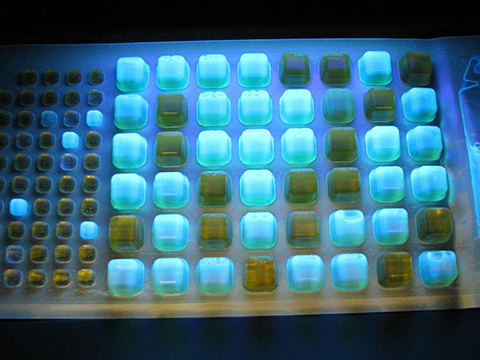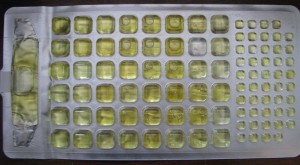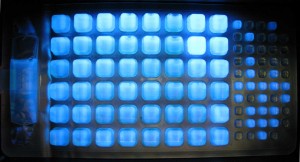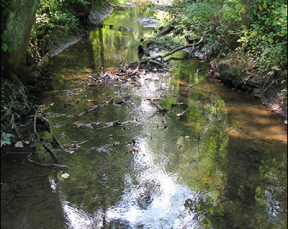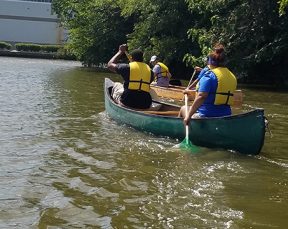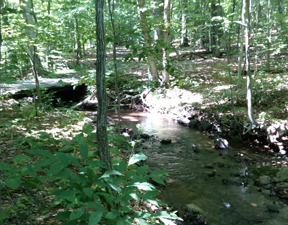I am happy to report that bacteria have returned to upstream Loantaka Brook! Well, maybe happy isn’t the right way to put it. Let me give you some background and you’ll see we’re making progress. During summer 2014 E. coli monitoring, sites in Loantaka Brook near Morris Township’s Ginty Pool had very low levels of E. coli and total coliform. We have talked previously about what E. coli is, but haven’t paid any attention to total coliform. Total coliforms are the various types of coliform bacteria, including those which are fecal in origin, like E. coli. However, total coliform also includes coliform bacteria that have other origins, such as those found naturally in soils.
The method GSWA uses to measure E. coli also measures total coliform. In the majority of samples collected in streams, lakes, and ponds, we have seen very high total coliform (often around 2000 colonies in 100 ml of sample water). This isn’t a concern because many types of coliform are naturally occurring in the environment and they do not necessarily indicate fecal pollution.
Back to Loantaka Brook, during summer 2014, we saw not only very low E. coli but ALSO low total coliforms at LB4M near Ginty Pool. Maybe Loantaka Brook did not have much E. coli input? This could have been, but even at sites with low E. coli (such as Bayne Park in Harding Township or Primrose Brook in Jockey Hollow) we often saw high total coliform. More likely, there was something else going on that was killing both E. coli and total coliforms. On the dates in 2014 when I collected the E. coli samples, I noted that the stream smelled of chlorine from the nearby Ginty Pool.
After speaking with the pool management and determining that they were not discharging any water into Loantaka Brook during the summer, I reached out to the Morris Township engineer. While it sounded like what we had found was indeed being caused by the pool, we weren’t positive. However, the pool was undergoing major work during the winter of 2014-2015, so we would be able to conduct follow-up monitoring during summer 2015 to see if their work fixed the problem.
Last year, when I mentioned this problem during a presentation, I was asked, “Is it so bad if chlorine is getting into the stream and killing the bacteria? Isn’t less bacteria a good thing?” Sort of – less bacteria is a good thing, however aquatic life are not conditioned to live in chlorinated water, so there could have been other detrimental impacts occurring. The ideal situation would be less bacteria because of natural conditions in the stream (i.e. no sources of fecal pollution into the stream in the first place).
This summer, I am happy to report that the E. coli and total coliforms are back in Loantaka Brook, so clearly the work done at Ginty Pool did fix the problem. However, we have replaced one problem with another, as E. coli this year are very high (well above the NJ State Standard) during both wet and dry weather. Click here for the summer 2015 E. coli results and check out LB4M, below Ginty Pool, and LB5 upstream of Ginty Pool.
My next post will discuss what we’re doing about the high E. coli – stay tuned!
